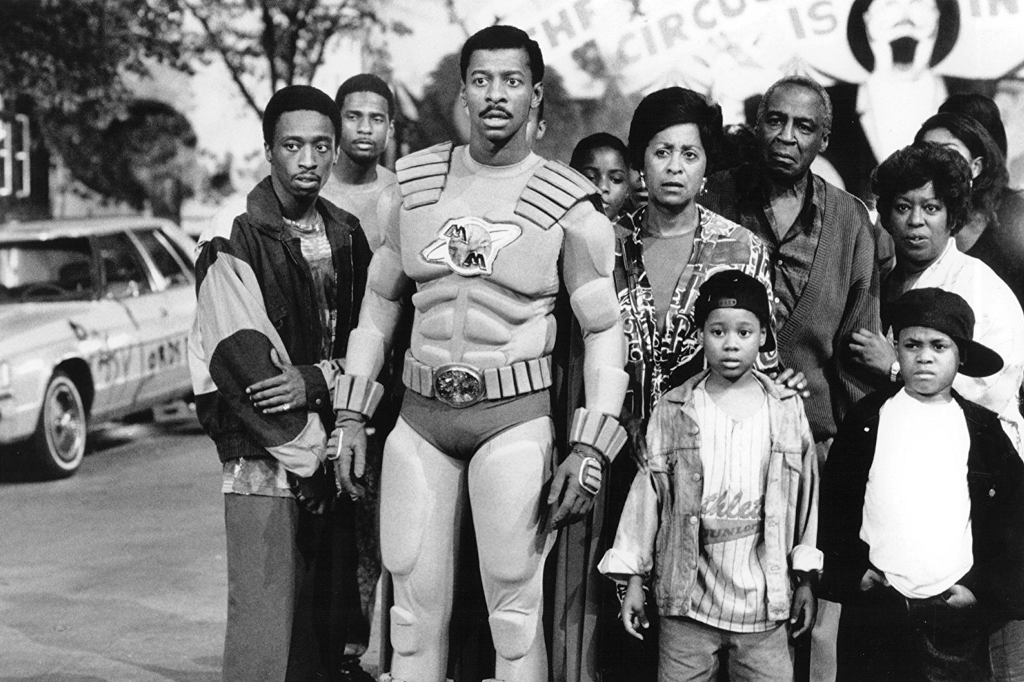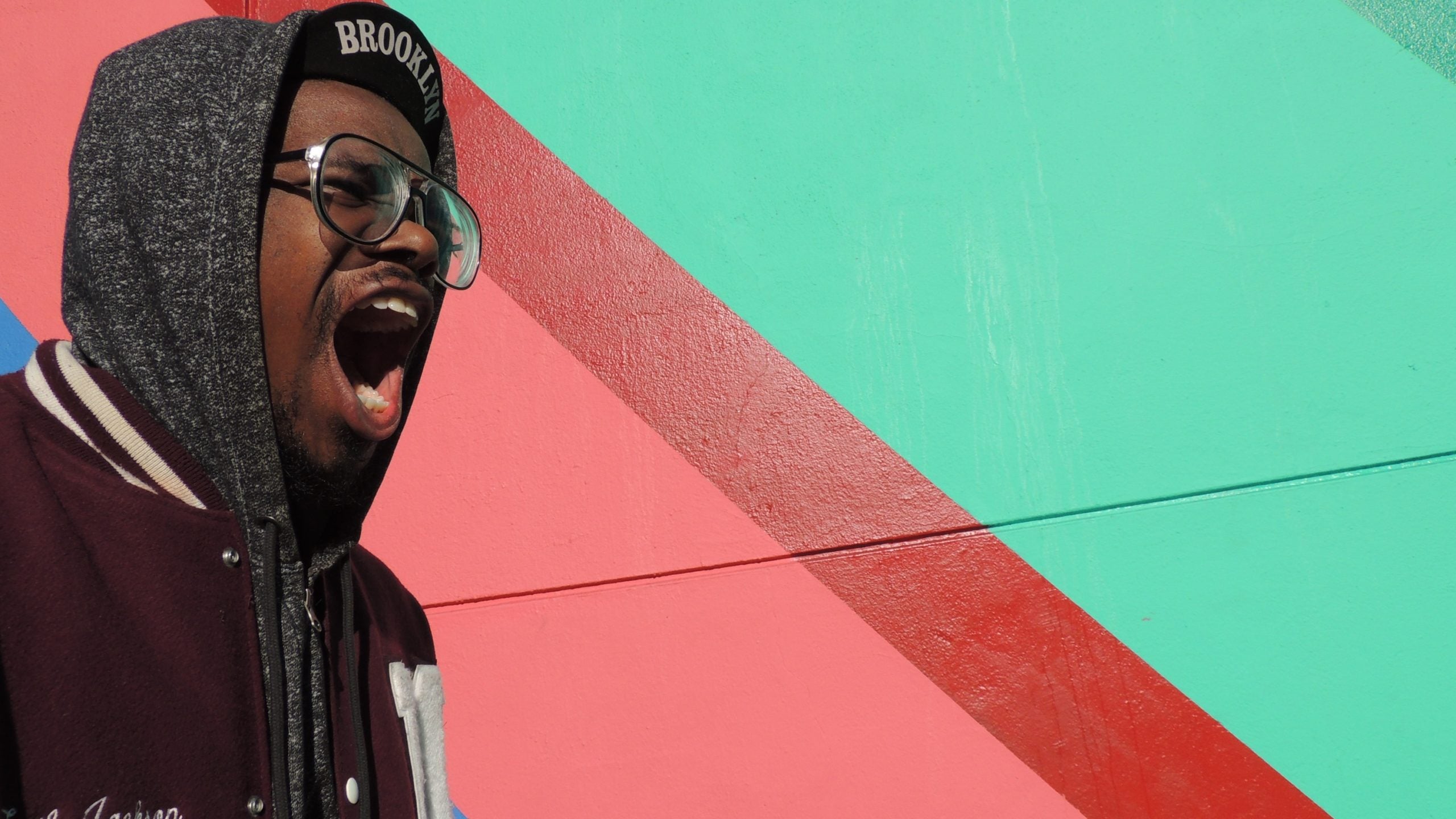Let me offer a quick correction to all of the Black Panther coverage over the last week or so: While it’s certainly the first black superhero movie with a massive budget, it’s certainly not the first black superhero movie ever. That distinction belongs to the films below. None of them are part of the Marvel or DC universe. And most of them didn’t get sequels. But they all at least set out to do the same thing — inspire the next generation of black kids to fly.
‘The Meteor Man’ (1993)
This film was #BlackExcellence before the hashtag, even though it was widely panned by critics. Meteor Man tells the story of a high school teacher (played by writer/director/star Robert Townsend) from a troubled Washington D.C. neighborhood who becomes a superhero and takes on the gang that’s been terrorizing his streets. Meteor Man is like the hood Superman, with similar abilities to go airborne and to see through things. Townsend has said the film was misunderstood at the time by critics who generally panned the zany comedy. He made it with the intention of giving black families something to see since there were no films for kids with black people in them at the time. He’s right — other black films back then included Poetic Justice, Love Jones and Menace 2 Society. To that end, it’s a shame Meteor Man isn’t available on Netflix so as to be rightfully introduced to the next generation.
‘Blankman’ (1994)
If Meteor Man was the hood Superman, Blankman was the hood Batman — i.e., a regular dude with no powers but lots of ingenuity. Given that Blankman was a Damon Wayans film, it’s more spoof/satire than superhero film. Case in point: Blankman had no powers, he couldn’t fight and he was a virgin. If anything, Blankman seemed like a more capable version of Wayans’ In Living Color character Handi-Man.
Though Blankman was goofy AF, I could’ve given a shit as a kid. Whenever it was on cable, my cousins and I would dress up like him and Other Guy (his sidekick/brother played by David Alan Grier). And because his costume was stuff you could find around the house, we never had to spend money on looking like our favorite hero.
‘Steel’ (1997)
Most people look at Steel now and think it was yet another attempt to make Shaq a thing in Hollywood. For those of you who forgot, Shaq’s entry into the NBA wasn’t just about broken backboards and Finals appearances; Shaq was a budding media mogul. He had successful rap albums, inexpensive sneakers, a video game and starring roles in a number of movies. (Don’t get me started about how I favored Kazaam over Forrest Gump for years.)
https://www.youtube.com/watch?v=ZA9AtHjJxWM
But when the Big Diesel decided to dawn the Steel mantle, he was stepping into a legit comic book franchise. Created as a replacement to a deceased Superman, Steel was a brilliant weapons engineer who grew tired of the rampant crime in his city. So he created his own costume made of steel and started fucking shit up. The character never really caught on and the movie was booty juice. How much booty juice you might ask? Ray J was in it, and he delivered the second best performance behind the metal suit.
‘Spawn’ (1997)
Spawn was the first film to feature an African-American actor (Michael Jai White) as a major comic book superhero. (Or more accurately, White and Shaq basically tied for the honor as Steel and Spawn came out within a few months of each other.) Spawn was already an extremely successful independent comic series so the movie was highly anticipated. I remember my momma taking me and my cousin to see the movie — she thought it was important to see black superheroes — even though she’d never read the comics. But when she realized that Spawn was about a former CIA agent who was burned to death and then sent to hell — where he sold his soul to return to the mortal plane and avenge his family — she lost her motherfucking mind: “This movie ain’t for kids! It ain’t for grown-ups!”
‘Blade’ Trilogy (1998–2004)
By the time Blade came out, my mom had learned her lesson and refused to let me see it in the theater. Instead, I had to wait until it was at Blockbuster to finally see Wesley Snipes destroying vampires in random NYC techno clubs. That first scene when he beheads a whole club of vampires with a double-edged sword blade was my day-to-day fantasy. I would take my momma’s leather jacket and my sisters’ black Barbie shades and walk around the house tossing my frisbie like it was Blade’s knife. It was fucking awesome. And IMHO at least, paved the way for the Twilight vampire craze and current Marvel takeover.
‘Up, Up, and Away’ (2000)
Townsend’s second foray into the superhero genre — he directed and played the Golden Eagle — was another family friendly film geared toward kids. It’s about a family of superheroes whose youngest son never receives his powers on his 13th birthday. At first, he tries to lie to his family about having powers, but eventually, the truth comes out and he still saves the day anyway. If you think this sounds a lot like The Incredibles, you’re absolutely right. But remember: Elvis stole rock ’n’ roll from Chuck Berry. And more importantly: That it came out a full four years before The Incredibles.
‘Static Shock’ (2000–2004)
Static Shock hasn’t made its way to the big screen yet, but it was a poppin’ cartoon show that came on every day during the WB’s after-school cartoon block. It’s hero was a black teen, Virgil Hawkins, who received electromagnetic powers after he and other city teens were exposed to radioactive chemicals during a gang fight. Not all those other teens, however, want to use their powers for good, so Virgil must stop them and their evil deeds.
‘Catwoman’ (2004)
Catwoman in the comic books was white, then Eartha Kitt played her during the Adam West Batman regime:
Yet when Tim Burton’s Batman Returns came out in 1992 she was white again (and super white at that as she was played by the always porcelain Michelle Pfeiffer). She was even white again in the WB Batman cartoons.
So when DC announced that Halle Berry, fresh off of playing Storm in X-Men and an Oscar win for Monster’s Ball, was gonna don the cat suit, it seemed impossible to fail. But then this happened:
Or as film critic Nell Minow (aka the Movie Mom) put it, “Awkward and clumsy as a cat in high heels, this version of the comic book character Catwoman does not have enough to sustain one life, much less nine. The plot is thin and the script and editing have an unfinished, even inept feel. Berry seems to confuse a cat walk with a catwalk, prancing in heels as though she is an unusually busty runway model in next year’s dominatrix fashion show.”
‘Hancock’ (2008)
Like Blade, it’s hard to deny Hancock’s influence as it ushered in an era of other reluctant superheroes like Deadpool. In it, Will Smith plays Hancock, a homeless man with immense superpowers who feels that people don’t deserve his help. In fact, at the beginning of the movie, Hancock is often drunk or hungover, which results in the public he attempts to help distrusting and disliking him. But after saving the life of publicist Ray Embrey (played by Jason Bateman), Hancock works with Embrey to attempt to repair his tarnished public image and eventually becomes a respected hero.
The film is funny and charming, and it was easily the most financially successful black superhero movie of all time. Of course, Black Panther will hold that distinction any day now. But it will never be able to wipe away Hancock — or everything else above — completely. Because that history has already been made.

